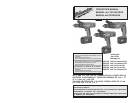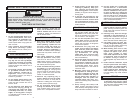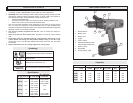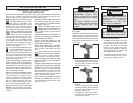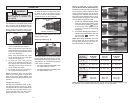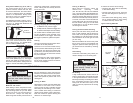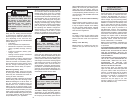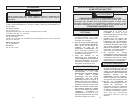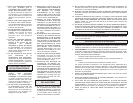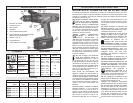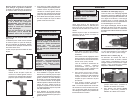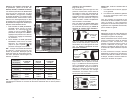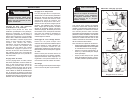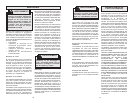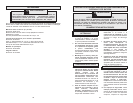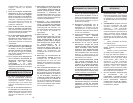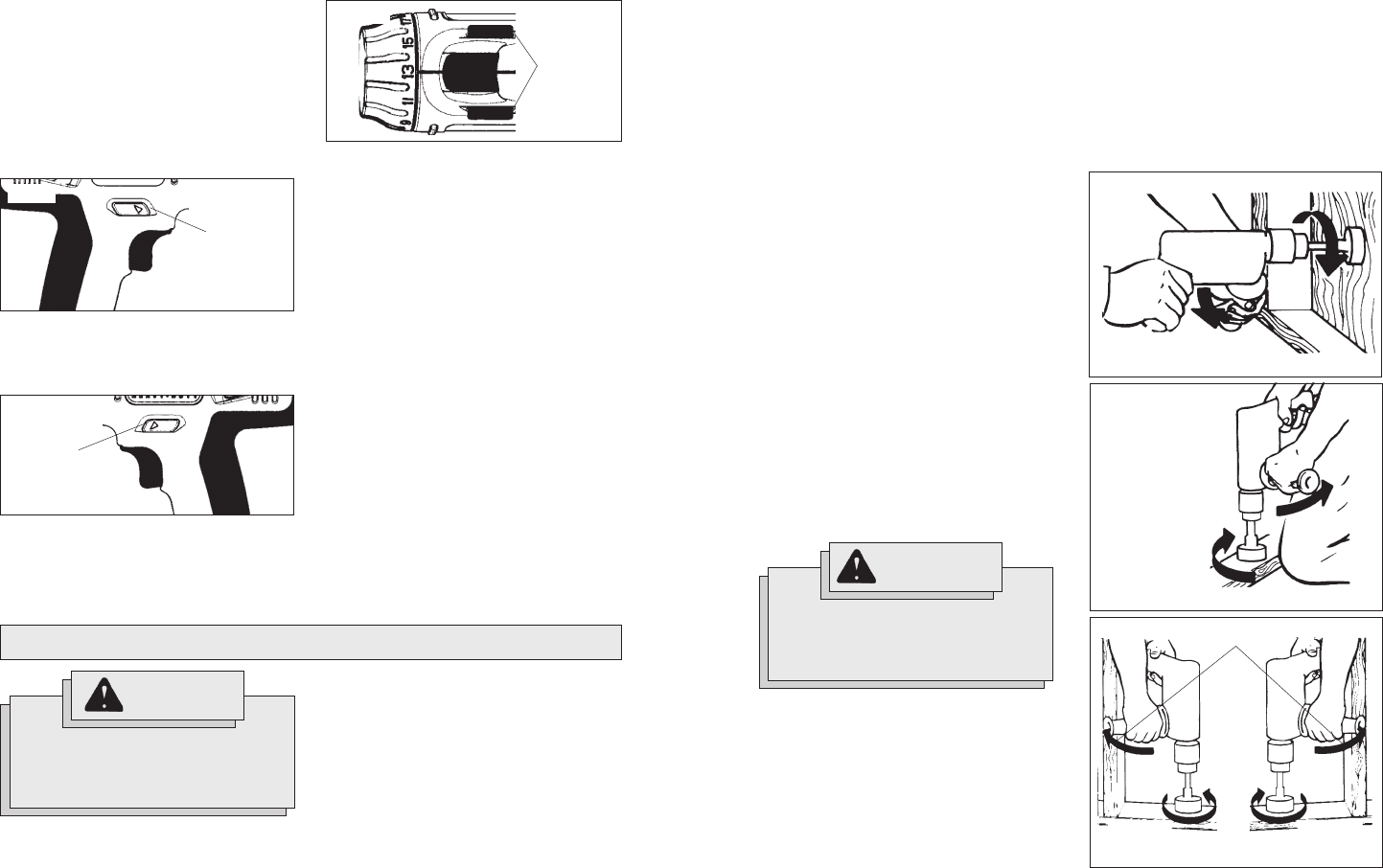
1110
Bit Binding
A high rotational force occurs when a bit
binds. If the bit binds, the tool will be forced
in the opposite direction of the bit rotation.
Bits may bind if they are misaligned or when
they are breaking through a hole. Wood
boring bits can also bind if they run into
nails or knots. Be prepared for bit binding
situations.
WARNING!
High rotational force. To reduce
the risk of injury, always hold or
brace securely. Always use side
handle on tools.
To reduce the chance of bit binding:
Use sharp bits. Sharp bits are less likely
to bind when drilling.
Use the proper bit for the job. There are
bits that are designed for specific pur-
poses.
Use caution when drilling pitchy, knotty,
wet or warped material or when drilling
in material that may contain nails.
Typical Bracing Methods
Drilling in Masonry
When drilling in masonry, select the
hammer-drill operating mode
(Cat. No. 0613-20, 0614-20, and 0624-20
only). Use high speed carbide-tipped bits.
Drilling soft masonry materials such as cin-
der block requires little pressure. Hard ma-
terials like concrete require more pressure.
A smooth, even flow of dust indicates the
proper drilling rate. Do not let the bit spin in
the hole without cutting. Do not use water
to settle dust or to cool bit. Both actions
will damage the carbide.
Driving Screws and Nut Running
Drill a pilot hole when driving screws into
thick or hard materials. Set the torque se-
lector collar to the proper position and set
the speed to low. Use the proper style and
size screwdriver bit for the type of screw
you are using.
With the screwdriver bit in the screw, place
the tip of the screw on the workpiece and
apply firm pressure before pulling the trig-
ger. Screws can be removed by reversing
the motor.
Overloading
Continuous overloading may cause per-
manent damage to tool or battery pack.
Fig. 14
Bracing against a stud
Reverse rotation
Reaction
Forward rotation
Fig. 13
Forward
rotation
Bracing against your leg
Reaction
Fig. 12
Forward rotation
Reaction
Bracing against the floor
Starting, Stopping & Controlling Speed
1. To start the tool, pull the trigger.
2. To stop the tool, release the trigger and
an electric brake stops the tool instantly.
All models feature variable speed control.
To vary the speed, simply increase or de-
crease pressure on the trigger. The further
the trigger is pulled, the greater the speed.
Drilling
Set both the hammer/drill and torque selec-
tor collars to the drill positions.
Place the bit on the work surface and ap-
ply firm pressure before starting. Too much
pressure will slow the bit and reduce drill-
ing efficiency. Too little pressure will cause
the bit to slide over the work area and dull
the point of the bit.
If the tool begins to stall, reduce pressure
slightly to allow the bit to regain speed. If
the bit binds, reverse the motor to free the
bit from the workpiece.
Drilling in Wood, Composition
Materials and Plastic
When drilling in wood, composition materi-
als and plastic, start the drill slowly, gradu-
ally increasing speed as you drill. When
drilling into wood, use wood augers or
twist drill bits. Always use sharp bits.
When using twist drill bits, pull the bit out of
For reverse (counterclockwise) rotation,
push in the control switch from the left
side of the tool (Fig. 10). Check direc-
tion of rotation before use.
performing maintenance, changing acces-
sories, storing the tool and any time the
tool is not in use.
Using Control Switch (Fig. 9, 10, and 11)
The control switch may be set to three
positions: forward, reverse and lock. Due
to a lockout mechanism, the control switch
can only be adjusted when the ON/OFF
switch is not depressed. Always allow
the motor to come to a complete stop be-
fore using the control switch.
For forward (clockwise) rotation, push in
the control switch from the right side of the
tool (Fig. 9). Check the direction of
rotation before use.
Push in
for forward
Fig. 9
Fig. 10
Push in
for reverse
APPLICATIONS
WARNING!
To reduce the risk of electric
shock, check work area for hidden
pipes and wires before drilling or
driving screws.
To lock the trigger, push the control switch
to the center position (Fig. 11). The trigger
will not work while the control switch is in
the center locked position. Always lock the
trigger or remove the battery pack before
Fig. 11
Push to
center
position to
lock trigger
the hole frequently to clear chips from the
bit flutes. To reduce the chance of splinter-
ing, back work with a piece of scrap wood.
Select low speeds for plastics with a low
melting point.
Drilling in Metal
When drilling in metal, use high speed steel
twist drills or hole saws. Use a center
punch to start the hole. Lubricate drill bits
with cutting oil when drilling in iron or steel.
Use a coolant when drilling in nonferrous
metals such as copper, brass or aluminum.
Back the material to prevent binding and
distortion on breakthrough.



